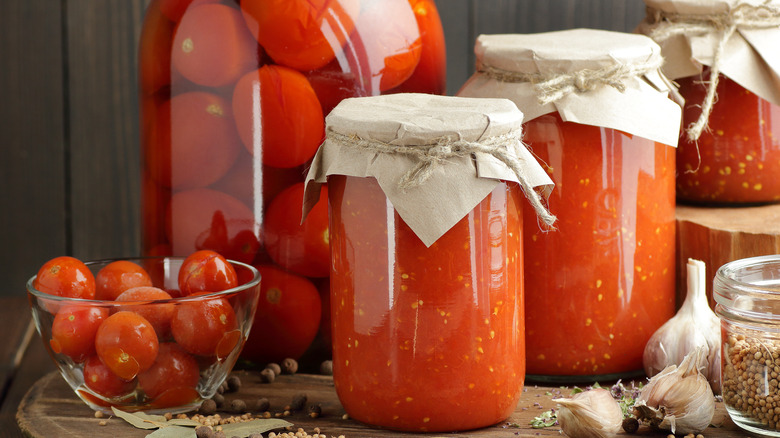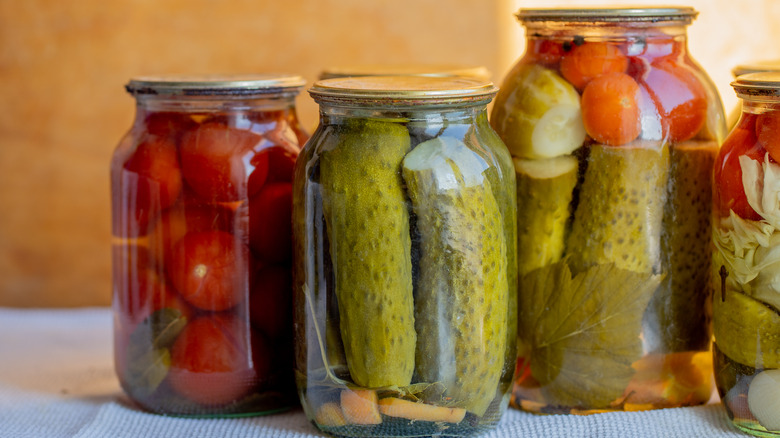The Downside Of Canning Your Own Food At Home
Home canning is a way to enjoy an abundant harvest from your garden into the fall and winter months. This food preservation practice consists of two methods — water bath canning and pressure canning. As noted by Clemson University's Home & Garden Information Center, no matter the method, the canning process inactivates enzymes that could cause food to otherwise spoil.
This happens by driving air from the jar using either boiling water or by water temperature reaching 240 Fahrenheit for an extended period of time. After canning is complete, the jar cools and a vacuum seal is formed. This keeps the food preserved until the jar is opened. The type of canning method used depends on the pH level of the food being canned. High acid foods require water bath canning, think pickles and jams, while low acid foods such as vegetables and meats need to be pressure canned.
If this all seems confusing, don't feel bad, there's a learning curve when it comes to home canning foods. There are numerous resources out there, like the home preserving guides on the BallCanning® website. Since we're talking about food you'll eat and possibly feed to others, it's important to understand the entire picture before canning. This includes knowing which canning method should be used, the type of equipment you'll need, the safety protocols involved, and the amount of time and money needed to can your own food.
Canning takes time and food is decreased in nutritional value
While canning vegetables from your garden or preserving homemade jam can be rewarding, be prepared to invest time and money into this endeavor. At minimum, home canning equipment includes a water bath or pressure canner, mason jars, and canning utensils. Better Homes & Gardens offers a list of the tools you'll need to can at home, along with an approximate price for each item. In terms of time investment, you'll need to account for the processing time to can the food.
As noted by the National Center for Home Food Preservation, processing time is higher for pressure canning than water bath canning. Since you're investing time and other resources into canning, you should also consider that canning food significantly reduces the food's nutrients. Canned fruits and vegetables have about 35% of the vitamin and mineral content of those same items when they're fresh, according to the website LEAFtv.
And the most important factor that's often overlooked when canning food at home is that it's necessary to follow a research-based recipe and safe canning methods. Failure to do so can lead to botulism — a foodborne illness with symptoms that include difficulty swallowing, blurred vision, nausea, and more (via CDC). The main thing to keep in mind with home canning is that although it may be a worthwhile skill to learn, it's not guaranteed to be as safe, inexpensive, or convenient as purchasing canned food from the grocery store.

